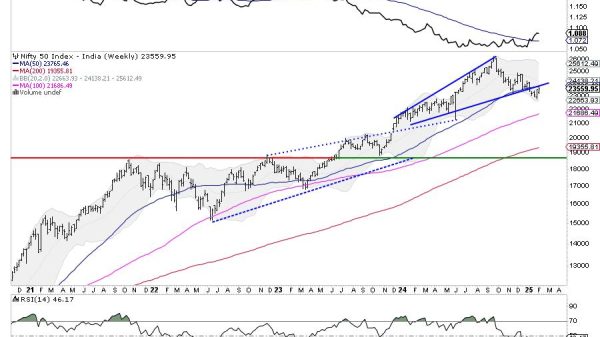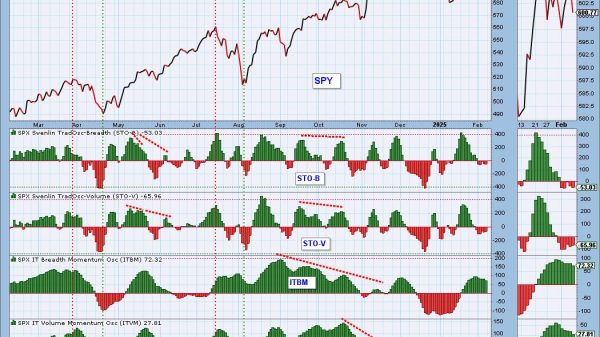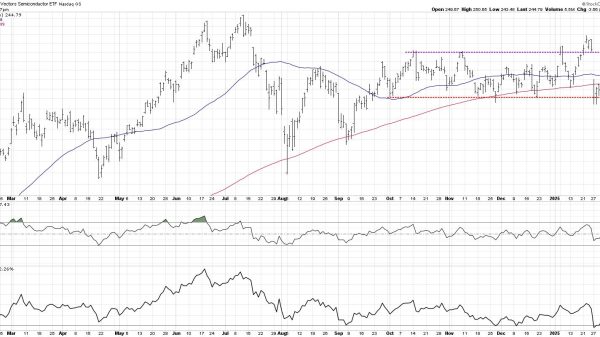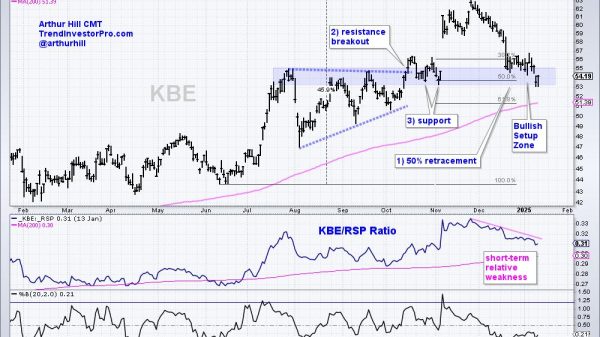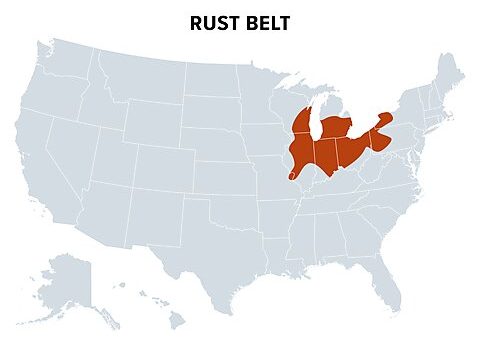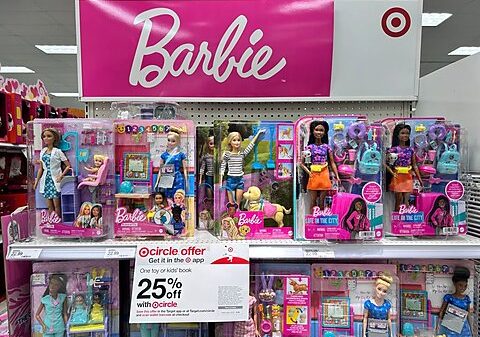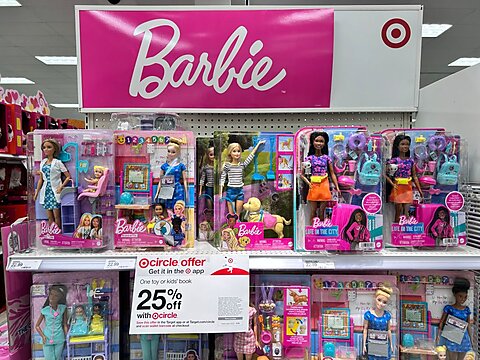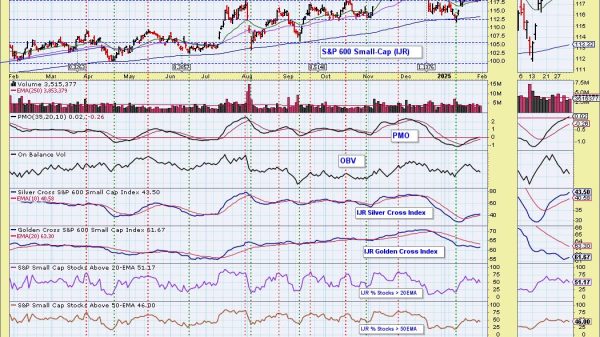Jeremy Horpedahl

Trump’s trade war has a new target: Barbie dolls. And not just Barbie dolls, but toys of all kinds. As the new tariffs (no longer over 100 percent, but still higher than before) start to be applied to goods that are purchased in the US, consumers are likely to see higher prices. That’s not just a theoretical idea, as the CEO of Mattel, the company behind Barbie and many other children’s toys, recently confirmed that the tariffs will lead them to increase prices.
President Trump, for his part, seems okay with this, and in two recent interviews he has stated that it’s fine if little girls only have 3 dolls, rather than 30. This might ring true to parents of young kids that can’t walk around the house without stepping on yet another child’s toy, but overall, this is a horrible message of degrowth. One of the main benefits of economic growth is the increasing variety and affordability of goods and services.
At some point, kids might get bored with the 300th doll, but this is not something for the government to dictate. And this is the main point: consumers are choosing to buy 30 dolls, or whatever else, because they want to and it brings them joy. Consumers can always choose to buy less on their own, but they are best situated to determine how many dolls and other toys their kids can have (even though, as a parent, this is a constant struggle!).
Furthermore, being able to purchase goods at a lower price thanks to international trade leaves more money in our pockets to save or invest or spend on non-tradable services, which are rising quickly in price and rising as a share of consumer spending. That truism applies whether we buy 30 dolls or one or something else entirely.
When the Barbie movie came out in 2023, I wrote a light-hearted but still serious post about the benefits of economic growth for women and young girls. Compared to when the Barbie doll was first released in 1959, a woman in 2023 could have 3–4 times as many dolls with the same number of hours of work. Or as Chelsea Follett put it, the number of hours needed to work to buy a Barbie fell “from well over an hour to just over 12 minutes.” We should only hope that we would see this progress for goods and services more widely. And indeed, for some categories of goods, we do see this progress.
For the broader category of toys, the gains have been even more impressive. Since 1997, the average price of toys in the US has been falling sharply, and today the toys CPI component is about one-fifth of what it was in 1997. That’s not even adjusting for inflation or wages—that’s the nominal price! And sorry CPI truthers, this isn’t due to hedonic adjustments, which are done for some goods (such as TVs) to account for increases in quality, but these adjustments don’t apply to toys.
Trump does have a point: dolls and other toys will be significantly affected by increasing barriers to trade, especially barriers to trade with China. As Scott Lincicome noted in a recent essay, 97 percent of toys sold in the US are imported, and around 80 percent of those are imported from China. The flipside of this reality, however, is that trade explains a lot of our modern “toy abundance.”
Going back to 1978 (the first year that toys are reported separately in the CPI), average toy prices have fallen by 62 percent, at the same time that average wages increased by 449 percent (both stated in nominal terms). Putting these two together, we see that toys are 14 times more affordable than in 1978, as shown in Figure 1 below.
Despite what you might gather from looking at the floor of a child’s room, only a small percentage of consumer spending in the US goes to toys: about 0.29 percent, according to the current weights of the Consumer Price Index (based on the Consumer Expenditure Survey). But this has been almost cut in half from 1997, when toys were about 0.45 percent of consumer spending.
Even for the type of family that spends the most on toys—married couples with young children—only about 0.4 percent of their spending goes to toys, or around $400 per year. We can easily imagine that without foreign trade, they could spend twice as much: perhaps another $400 per year … or simply get by with fewer toys, as President Trump suggested. Either way, they are worse off.
It’s not just toys that are significantly cheaper today thanks to international trade. Apparel is another sector of the US economy that is dominated by imports. Similarly to toys, about 97 percent of clothing and shoes sold in the US are imported. China is not quite as dominant for apparel as it is for toys, though even after the recent shifts of some production to Vietnam, China is still the leading source of US apparel imports, accounting for almost 30 percent of the total.
Apparel prices haven’t seen the steep decline that toys saw, but they have been essentially flat in nominal terms since 1992—that’s over a time period when prices on average in the US rose 130 percent and average wages rose almost 200 percent. And just like toys, apparel prices are not quality adjusted in the CPI, so no funny business here (and while popular perception is that clothing quality has fallen over time, Alex Tabarrok makes the case that the opposite might be true).
For clothing, we can take an even longer-run perspective than toys, with data from BLS going back over 100 years. Indeed, that long-run perspective is very useful: 100 years ago, the average family was spending somewhere around 15 percent of their income on apparel. By 1997, this had declined to about 4.5 percent, and just as with toys, it’s not because we are buying fewer t‑shirts and shoes. If anything, we are buying a lot more. The gains didn’t stop in 1997, with the share spent on clothing being more than cut in half again to just 2 percent of income in 2023.
That same married couple with young children today spends a lot more on apparel than toys: $3,500 if their kids are ages 6 to 17. Without the benefits of global trade, they could potentially be spending thousands of dollars more to keep their family clothed. Figure 2 below shows how clothing and shoes have fallen as a share of total household spending for these families with children since 1984 (the earliest data available for this type of family structure).
Finally, we can look at the impact of imports on US food consumption. While the US does import a lot of its food—about $200 billion worth in 2024, according to USDA—the import share is around 15 percent, nowhere near as dominant as in toys or clothing. For food, international trade provides not only some relief in terms of lower prices, but probably the bigger role is increasing the variety of goods available to consumers. Some products might be impossible to grow in large quantities in the US, such as bananas and coffee. For other foods, international trade allows us to enjoy fresh foods year-round, rather than seasonally.
Turning away from international trade is not merely a small inconvenience to young children, requiring them to put up with having fewer dolls and toys to bring back American manufacturing. If consumers spend more money on toys, clothing, and food, they will have less left to spend on other goods and services. And as the prices of services such as healthcare and education continue to rise faster than most other goods, the fall in the prices of imported consumer goods has provided a safety valve so that families aren’t completely squeezed by these higher prices. Plus, having a new doll at Christmas, along with some fresh oranges, is one of those small joys in life that children should be able to experience in a rich economy like the US.






